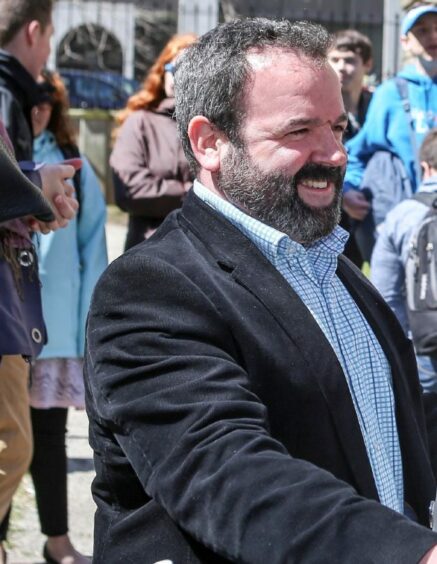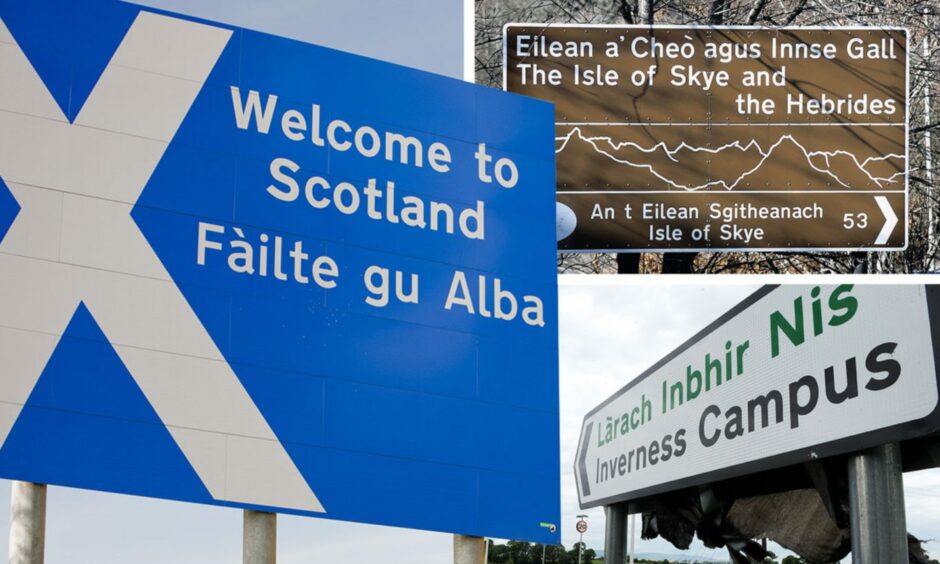Money talks, and it is increasingly making its point in Gaelic.
Use of the language is seen as a unique selling point (USP) for small businesses to stand out and compete with larger firms.
Growing demand from consumers for quality, authenticity and provenance is also fuelling Gaelic popularity nationally and internationally.
Conference to discuss Gaelic language and culture
A conference this week will hear how language and culture is pushing economic development in Scotland and Nova Scotia.
The XpoNorth event, ‘Shared Perspectives: Driving Culture Through Place’ will be conducted in Gaelic.
It is one of a number of sessions on different topics at the online conference on June 15 and 16.
XpoNorth, the support mechanism for Highlands and Islands Enterprise (HIE) to the creative industries, works with businesses, social enterprises and community organisations that demonstrate Gaelic’s economic and social value.
The discussion will involve professionals from both sides of the Atlantic. What they have in common is using Gaelic as an everyday part of their work.
According to research by HIE in 2014, Gaelic is worth £82 million-£149 million annually to Scotland’s economy.
A total of 70% of firms using Gaelic say it helps them stand out from the competition.
Iain Hamilton, HIE’s head of creative industries and XpoNorth co-founder, says Gaelic is a unique and powerful opportunity, with economic and social value.
Using Gaelic can make businesses money
“Languages are valuable in their own right.
“But, if using Gaelic in your business can make you extra money, what’s not to like about that?”
He says there has been a change in how people value Gaelic and its potential.
“We have found, especially in the last few years, that folk are looking for stuff that has a real provenance and authenticity and has a bit of meaning to it.
“Particularly when money is tight, they want something a bit more than just the basic product, whatever it is.
“The Highlands and Islands has a great opportunity because the place is seen as a unique, special place.
“And Gaelic is definitely a really important part of that.”
XpoNorth and HIE have seen the consumer base for Gaelic expand with sessions using the language attracting international industry representatives.
Webinars held in Gaelic and Gaelic-related posts on social media also regularly generate significant views.
Dundee composer Jed Grimes recently produced the soundtrack for a US video game, The Bard, largely made up of traditional Gaelic songs.
VisitScotland’s video, Scottish Gaelic Explained, has had more than 500,000 views.
Businesses urged to increase use of Gaelic
In the last four years, it has also seen the popularity and views of Gaelic content rise by 56%. The number of website visitors seeking Gaelic content has risen by 73%.
In addition, over one million learners have now signed up for the Duolingo Gaelic course.
Murdo MacSween runs Astar Media, a marketing agency specifically working in Gaelic.
“Our clients and their stakeholders have given us glowing feedback as we’re offering a range of services through the medium of Gaelic.
“Gaelic has started to pick up more status in the past few years, with aspirational products and fashionable brands starting to adopt Gaelic usage as a sales tactic or a nod to the culture.
“In my previous role as a communications manager it was sometimes quite hard to sell Gaelic to the wider public in Scotland.
“But things are improving, the cultural relevance seems to be more prevalent.
“Whisky, gin, restaurants, boutique shops – they are frequently starting to bring a Gaelic focus or twist to what they are doing and seeing the value in doing that.”
Mr MacSween says traditionally, Gaelic-speakers working in creative fields were singers, musicians and poets.
But now they include filmmakers, visual artists and social media influencers.
Economic effect of the language on business can develop
“This means the growth of Gaelic, the cultural relevance of Gaelic and the economic effect of Gaelic can only develop in the coming years.
“Having Gaelic appear on your feeds and performing well with global algorithms means not only is there an active interest in Gaelic, but the visibility of the language is going to continue to expand.
“(That is) both within Scotland and, with the advent of learning platforms like Duolingo and SpeakGaelic, worldwide to the Scottish diaspora and beyond.”
There are an estimated 2,000 Gaelic speakers in Nova Scotia.
A dozen Gaelic organisations and groups in the province hold immersion sessions, workshops, festivals and events with Gaelic content.
The Celtic Colours International Festival represented $15,481,716 Cdn (£9.8 million) in economic activity.
Tens of thousands people annually visit Gaelic organisations and there are an average of 2,000 interactions for posts with Gaelic content.
Lewis McKinnon, executive director of Gaelic affairs for Nova Scotia, says Gaelic does not exist for any specific economic activity.
However, it does present opportunities that are economic in nature.
“For these opportunities to be realised, they should be managed and controlled by local Gaels/ Gaelic speakers.
“Agency around Gaelic-related economic activity should also be led and advanced by Gaels/Gaelic speakers.”
Gaelic can reinforce sense of identity
To increase visibility and profitability, Mr McKinnon says businesses can increase use of the language. This includes using Gaelic messages on signs and menus.
He says customs surveys can show the impact of Gaelic on a firm’s bottom line.
This can also reveal support that Gaelic use is being encouraged by the company.
“This leads to feelings of greater loyalty, appreciation and a willingness to promote via word of mouth and/or affirmative statements via social media.”
He adds: “Gaelic’s use reinforces a sense of belonging, connection to place and local identity.”
Are you interested in more exclusive and breaking Highland and Islands news from the P&J? If so, why not join our dedicated Facebook page HERE





Conversation